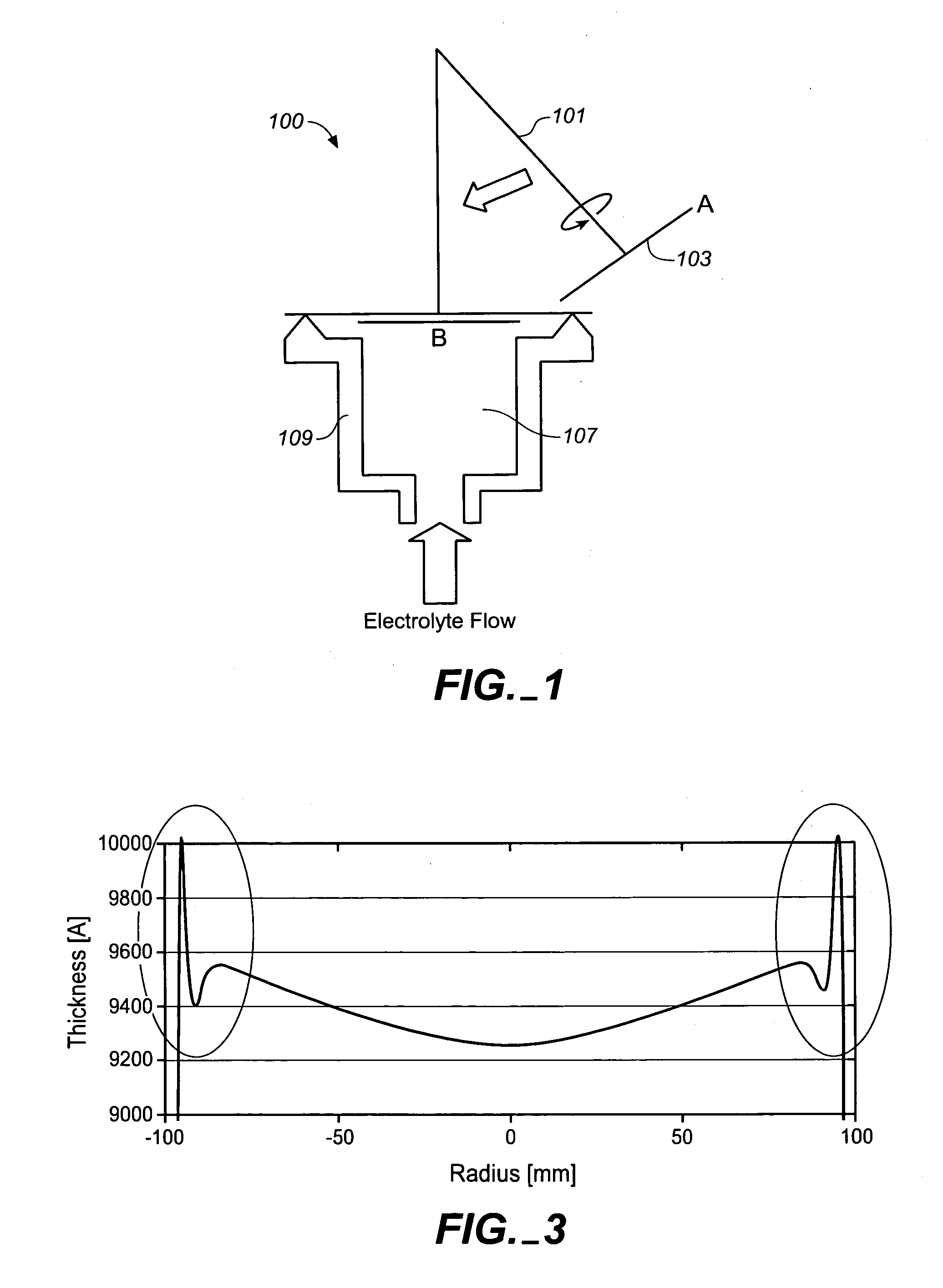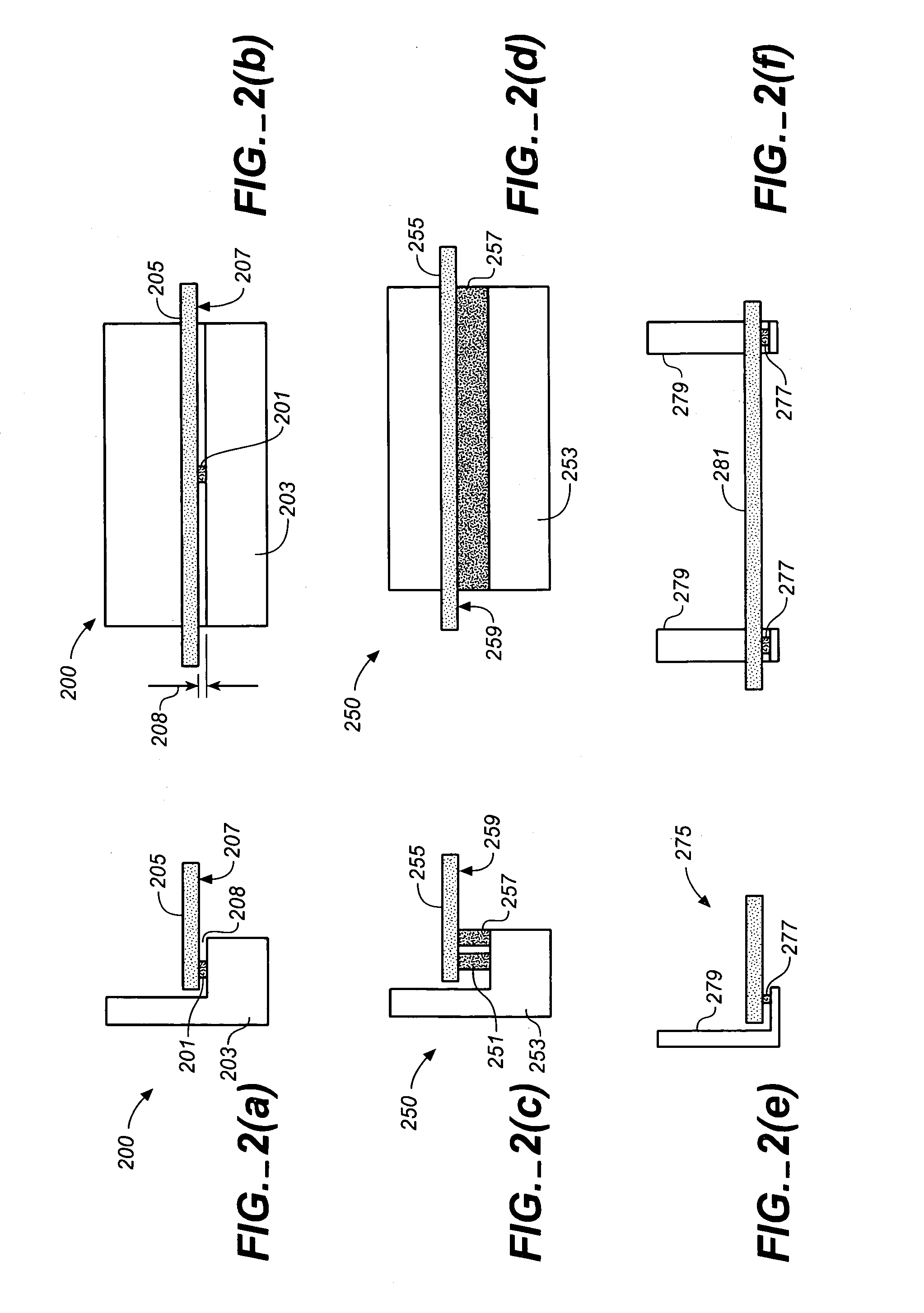Contact ring design for reducing bubble and electrolyte effects during electrochemical plating in manufacturing
a contact ring and electrolyte technology, applied in the field of electrochemical plating systems, can solve the problems of inability to meet the requirements of all applications, inhibit the plating reaction, and form no plating zones, etc., to improve drainage and fluid flow, improve the flow across the surface, and improve the effect of fluid flow
- Summary
- Abstract
- Description
- Claims
- Application Information
AI Technical Summary
Benefits of technology
Problems solved by technology
Method used
Image
Examples
Embodiment Construction
[0027]The invention pertains to an improved contact ring for use in electroplating a semiconductor substrate material (e.g., a semiconductor wafer). Specifically, the principles of the present invention are directed to improved contact ring designs and methods in order to minimize or eliminate common plating defects while maintaining the contact ring's structural strength and chemical resistance.
[0028]In the discussion above, several common problems with current contact rings were discussed. The solutions detailed in this various embodiments of the present invention generally address these problems. Some embodiments of the invention address improvements to fluid flow near the electrical contacts. One specific embodiment is shown in FIGS. 5(a)–5(d) and 6(a)–6(e).
[0029]In general, a contact ring according to various embodiments of the invention incorporates a number of changes from older designs. In one embodiment, openings are formed along the circumference of the contact ring. These...
PUM
| Property | Measurement | Unit |
|---|---|---|
| entry angle | aaaaa | aaaaa |
| entry angle | aaaaa | aaaaa |
| entry angles | aaaaa | aaaaa |
Abstract
Description
Claims
Application Information
 Login to View More
Login to View More - R&D
- Intellectual Property
- Life Sciences
- Materials
- Tech Scout
- Unparalleled Data Quality
- Higher Quality Content
- 60% Fewer Hallucinations
Browse by: Latest US Patents, China's latest patents, Technical Efficacy Thesaurus, Application Domain, Technology Topic, Popular Technical Reports.
© 2025 PatSnap. All rights reserved.Legal|Privacy policy|Modern Slavery Act Transparency Statement|Sitemap|About US| Contact US: help@patsnap.com



